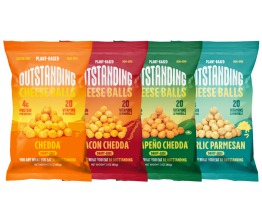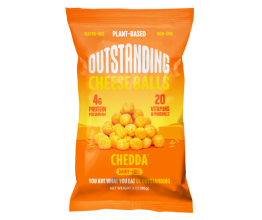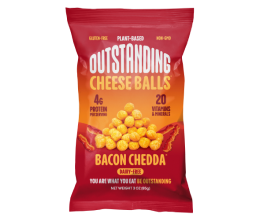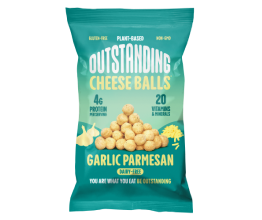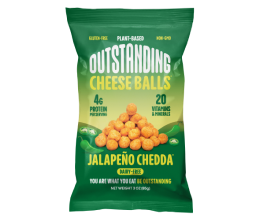How To Calculate Percent Daily Value for Food Portions
It’s rare to see a commercial for a healthy food item these days and not hear the announcer say something like, “...that’s 20 percent of your daily recommended value per serving!” What are they even talking about? We see the percentages on the nutrition labels of our food, but do we really know what it means?
To hit that balanced diet, you need to know what you are consuming and how much is enough. (or too much, for that matter) Say peace out to the time where we only counted calories, as more and more people are focusing on nutrition as a whole. Let’s find out what this all means and why it’s important!
The Basics of Daily Percent Values
Percent daily what now? The Food and Drug Administration (FDA) is responsible for coming up with those Nutrition Facts labels we see on the packaging of all of our store-bought foods. Those little babies hold the key to all that is good! Just kidding. But they do hold the key to all that’s in your food!
The information you see on those labels lets you know the nutritional value and serving size of whatever’s in that package.
The labels show us things like:
- Serving size
- How many servings are in the container
- Fat content
- Carb count
- Fiber content
- Some of the various vitamins and minerals that may be present
- Protein content
Nutrition Facts labels have their own set of standards they must adhere to. Companies can’t just print whatever the heck they want! They have to include a standard set of nutrition facts and must format their packaging as required by the FDA.
On the right-hand side of the Nutrition Facts label, you will see a column labeled as “%DV.” That stands for Percent Daily Value. Ah-ha! Finally, we’re getting somewhere. Those percentages are based on the recommended American diet of 2,000 calories per day. Now, a person’s dietary needs are as unique as their fingerprints, but this gives us something to go off of.
Calculating Percent Daily Values
Bust out those calculator apps on your cell phones, peeps. It’s time to do some math! The Percent Daily Value is calculated by dividing the amount in a serving by the total recommended daily amount. Multiply that answer by 100, and you’ve got your %DV! For example:
- 3g in a serving
- 15g recommended per day
- 3/15 = 0.2
- 0.2 x 100 = 20%
Thankfully, the Nutrition Facts label provides this information for us, but it’s handy if your needs are different or you want to know the full recommended daily amounts for a given nutrient.
As always, consult your doctor or sign up for a telehealth visit if you have questions or concerns about your daily intake. If you want to get serious about your health, talk to a professional.
The Breakdown on Nutrition Facts
Want to go over some of the most popular sections on a Nutrition Facts label? We do, too! So, we’ve established that everyone has different needs, but a lot of people look for the same things. Let’s break it down.
Serving Size
Have you ever eaten an entire sleeve of mint chocolate cookie thins, only to realize afterwards that the serving size is only two cookies? Two cookies?! Bro, no one is eating only two cookies, and the same goes for our favorite salty snacks. Many people like to check their food packages for the stats, but no one has a love-hate relationship with Nutrition Facts labels like someone on a weight loss diet.
When you’ve been craving those salty chips but feel defeated when checking the nutrition information of your go-to snack, look no further. Vegan snacks like our Pig Out Pigless Pork Rinds will give you life. You can legit eat the whole bag without feeling bad about it. We post the Nutrition Facts labels front and center on our website and can actually brag about our snack stats. Seeing as though one bag has 25g of protein, we think you can see why.
Serving size is at the very top of each label because the rest of the information would mean nothing without it. We love to snack too, but remember those serving sizes can be surprising.
If a package stated that it had 220 calories and 5g of fat but didn’t tell you how big one serving was or how many servings were in the whole container, how would you be able to calculate your %DV or intake? Short answer: You wouldn’t.
Fats
Fat content used to get a bad rap, but there are actually some diets nowadays that praise it—keto, low carb, low carb high fat (LCHF), and more. Regardless of whether you are trying to eat low-fat or are trying to add more healthy fats into your diet, fats are one of the most important categories on your Nutrition Facts labels.
You may see the fat section broken down into subcategories:
- Total fat
- Saturated fat
- Trans fat (short for “trans fatty acids”)
While many people still want to follow a low-fat diet, most people can agree that saturated and trans fats are the ones you want to watch out for. Trans fats are known for raising bad cholesterol levels, creating insulin resistance, and causing an increase in inflammation. Yikes!
Inflammation has been directly related to a decrease in immune function. Implications could lead to diabetes, stroke, heart disease, auto-immune flare-ups, and other chronic conditions.
Mass studies were conducted back in the 1990s, and thankfully, that led to the FDA adding trans fat to their Nutrition Facts labels. Prior to that, only highly skilled individuals able to decode ingredient lists could determine whether or not processed foods contain trans fats. It is much easier now for everyone to know what they’re putting into their bodies. Thanks, science!
Carbohydrates
Have you ever had freshly baked bread? Like straight from the oven, almost too hot to hold, fresh? Straight up bomb. While many of us can’t live without some carby, carby goodness, others are doing everything they can to avoid them.
With many of those diets we mentioned earlier, keto and LCHF being two of the most popular right now, carbohydrates are super important to their followers—super important to avoid! Carbs are so important, in fact, that low-carb foods like cauliflower are lining up to take their place.
Love pizza but are living low carb? Try cauliflower crust! Miss the comforting crunch of cheese crackers? Have yourself some cauliflower crackers! (Or some of our healthy Puffs. They only have 4% of your %DV of carbs. Shameless plug, we know we know, but these things are awesome!)
What about taco Tuesday? Toss those traditional tortillas and opt for the cauli substitutes. Vegan bonus: Saute some cauliflower in your favorite taco seasoning and skip the meat—so freaking good.
If you are trying to eat a well-balanced diet or focusing on something more specific like low carb, you may need to monitor your intake and track just about everything you consume. Once again showing the importance of the Nutrition Facts labels and Percent Daily Values.
Sugars
Don’t get it wrong; we love a sweet treat as much as the next guy. But monitoring your %DV of sugar intake is important for so many reasons. Too much sugar can cause issues like:
- Inflammation: We’ve already mentioned inflammation’s negative effect on your health, but what about your skin? Advanced aging, anyone? Hard pass.
- Tooth decay: Cavities are the worst, and your dentist was right. Ease up on the sugar, so you don’t have to make extra trips to their office.
- Liver disease: Sugars like fructose are broken down in the liver, but then they turn to fat. Yeah, no thanks—that even sounds gross.
- Bodyweight: There’s no surprise here, but consuming excess sugar leads to weight gain. Studies consistently show that people who regularly drink sugary drinks tend to weigh more.
-
Sexual health: Gulp. Too much sugar can affect your blood flow and circulatory system. Problems can eventually lead to impotence. If you really want to up your game, lay off the excess sugar.
The Bottom Line
If we’ve learned anything, it’s that what you consume and why are important for more reasons than simply maintaining a healthy weight. Not only do we want to know if what we’re consuming is good or bad for us, but how much we can have without going overboard. Paying attention to our new friend, the Nutrition Facts label, we can decipher if the food we are about to eat actually suits our needs.
By calculating the Percent Daily Value, we can find a balance between eating things we enjoy and knowing when there is too much of a good thing. Next time you go to the grocery store or pop over to a friend's house, try impressing them with your new weird flex and calculate a snack’s %DV. They’ll probably laugh at your geek out, but we know they’ll be impressed too.
Sources:
How to Understand and Use the Nutrition Facts Label | FDA
Types of Fat | The Nutrition Source | Harvard TH Chan School of Public Health
